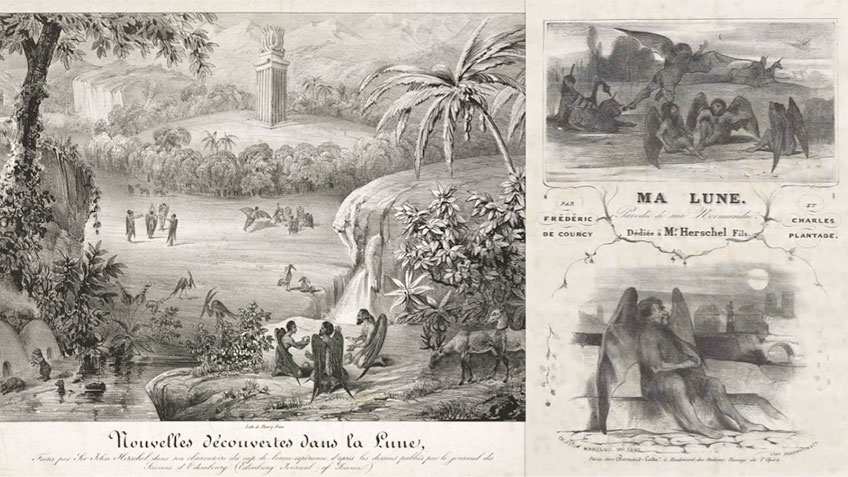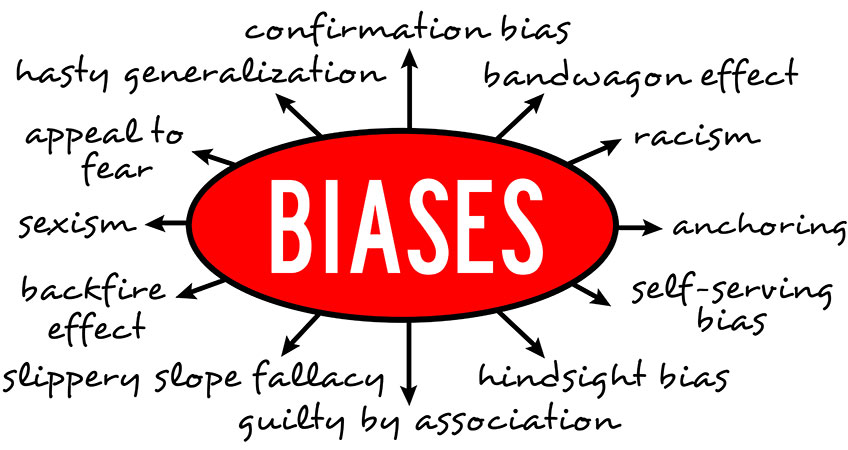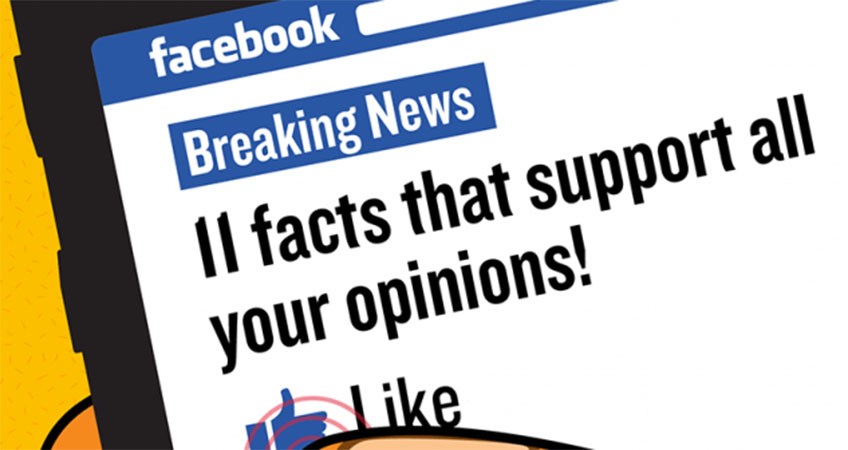The inability to tell fact from fiction is being driven by a number of factors and is challenging the way that consumers perceive and engage with brands. To help gain a better understanding of how consumers discern information and make their purchase decisions, SLD conducted a study among 2000 respondents in January, 2021. As part of our DeepReal series, we will be using the research findings to offer insights and strategies for CPG, Retail and Finance brands.
In the first article of the DeepReal series, we outlines how the perception of reality is shifting and why this matters to brands. If you missed it, find it here.
A Global History of Misinformation – The Coles Notes Version
The short version is that as long as people have been telling stories, they have been passing off fiction as truth. Religion used magical stories, kings used mythology, today’s politicians use Twitter. The biggest difference between the propaganda of old and today’s fake news is that information is much more readily available and easier to manipulate in modern times. The principle, however, is the same: stories, whether true or not, resonate with us based on many things other than fact.

Why is Truth so Important for Brands?
Brand strategy has become a highly complex art form that has the ability to make or break a company. This is largely due to the fact that consumers have both unprecedented choice and unprecedented access to information. Consumers can find information about products right down to raw material sourcing, or understand how employees are being treated by a brand, including employees of partners and suppliers. Consumers are skeptical and savvy – and yet, they desire affiliation with tribes, including brands. That means trust is more important than ever before – but also harder to come by.
Here are some of the key factors that are interfering with our ability to easily discern reality from illusion.
1. The Growing Tolerance of Biases
Online magazine PsychologyToday calls a bias “a tendency, inclination, or prejudice toward or against something or someone.” Some biases may be useful, like avoiding smoking or heavy drinking due to health risks. But biases often lead to stereotypes and discrimination. When biases become tolerated and even encouraged, the results can be horrific. The recent rise of white supremacist groups worldwide is a symptom of a deeper tolerance towards bias.
How Does Media Bias Impact Our Perception of Reality?
A 2020 Gallup/Knight report found that while 81 percent of Americans think media is vital for democracy, 57 percent recognize bias in their own media sources and 70 percent worry that owners of media companies are pushing their own agenda. This deep-rooted mistrust of mainstream media means that more people are turning to alternative news sources, allowing false information to proliferate.
Recognizing Our Biases and How They Impact Brands
Bias can be grouped into explicit (overt) biases and implicit (unconscious) biases. Explicit biases are ones we know we have and often try to justify. Implicit biases are trickier because we are unaware of them. Although both types of biases have an impact, it is the acceleration of explicit bias that is fuelling a reality chasm, where two different groups see things very differently.
If you take the ongoing issue of police brutality in the US as an example, we can see how explicit bias is driving different perceptions of reality. In spite of overwhelming proof that police target Black Americans and even kill them unprovoked, a group of the public believe a different story. However heinous this false narrative may be, it is “real” to some and causes real-life conflict, while also preventing action that could save lives.
What Can Brands Do About Bias?
Brands can hold themselves accountable for what they say and how they say it. And most of all, brands can challenge the tolerance of bias by not accepting it for themselves. Learning about biases and how they impact the choices you make both with your internal culture and external communications is imperative if brands want to earn consumer trust.

2. Rise of Anxiety and Self-Medication
The impact of COVID-19 on mental health has been well documented. A recent report published by KFF, a non-partisan health research organization, found that four in ten adults in the United States have reported symptoms of anxiety or depressive disorder during the pandemic, up from one in ten in 2019. KFF also found that many adults were experiencing trouble sleeping (36 percent) and eating (32 percent) due to worry and stress over the coronavirus. Our own research on consumer attitudes during the pandemic shows a rise in pessimism.
How is Anxiety Affecting Consumer Behavior?
A certain amount of stress can be useful, but an intolerable amount can destroy lives. Consumers living with high levels of anxiety behave very differently: for example, our study found that they were more likely to focus on value and have less trust in brands. The KFF study also found that alcohol and substance abuse, as well as chronic conditions, have also worsened as anxious consumers resort to self-medication.
Self-Care Versus Self-Medication
Diagnosed anxiety can be managed through medication, cognitive behavior therapy and other tactics such as exercise or meditation. However, anxiety untreated can lead to issues such as self-medicating with alcohol or other drugs, most notably today, synthetic opioids. But self-medication has found another new home in the world of online gaming, online gambling at a pay n play casino and even in the wellness industry.
Video game addiction, for example, is contested by the industry but considered by health care professionals to be a real problem. During the pandemic, gaming at sites like parhaatrahapelit-netissa.com have skyrocketed. Brands are leaping into the world of gaming and while there are opportunities here, there are also challenges in addressing toxic interactions and addiction. Brands are right to explore the world of gaming and gambling – but ignoring these issues could create unforeseen problems. If you need help finding reputable gaming sites, The Islandnow compares crypto casinos and provides in-depth reviews.

3. No Filter
The Sopranos. Breaking Bad. PornHub. Reddit. Parler. If you want to be shocked, just click. You will probably find it even if you’re not looking.
How is all this exposure to blood, rage and heterosexual-male dominated graphic sexuality affecting our perception of reality? The Media Violence Effect has been studied since the 1960’s and there is strong evidence that exposure to violence in media does increase aggression both in the short and long term. Addiction to pornography has become such a widespread issue that Starbucks, McDonalds and college campuses are blocking explicit content on their wifi networks.
Brands and Shock Value
Brands should be aware that although there may be a short-term gain to shocking imagery, there may be longer term consequences. This is especially concerning given that once an image or video is shared, you cannot take it back.
4. Is Anything Authentic?
The flip side of a no filter world is that we tell ourselves it’s all just special effects. Our ability to make dinosaurs come to life on screen may be very entertaining, but a deep-fake video of Barack Obama has real-life consequences. A strong growing preference for independent and local brands is in part due to the perception that these brands are more “authentic.” But what does that word even mean?
Defining Authenticity
Authenticity has long been a buzzword. But as soon as brands cash in on an “authentic” trend, it tends to lose its edge. Only a few years ago social media influencers were seen as authentic. But consumers have become increasingly skeptical and are turning to niche influencers. The more brands try to game the system, the farther away they get from authenticity. But what other options do marketers have?
In our upcoming DeepReal reports, we present findings from our consumer research into what authenticity means to them.
5. Predictive Analytics and the Algorithm
One of the most disruptive forces of this generation has been social media and the algorithms that drive content to a user based on their previous interactions. For marketers, being able to target consumers more specifically on the internet is essential. But the long-term impact of algorithms is still a huge unknown and some very negative side effects are rearing their heads.
How Do Echo Chambers Impact Brands?
“Echo chambers” occur when platforms filter comments or content based on your interactions, pulling in more of what you like and less of what you don’t. The implications for society are clear: divisiveness and a lack of discourse.
There are numerous challenges here, ranging from the inaccuracy of consumer data and new privacy legislation, to the fact that sometimes, consumers want something different and unexpected. We are only seeing the tip of the iceberg around this issue and brands should ensure they are paying close attention as it plays out.

6. Communities Redefined
Where and how we socialize is another factor that is impacting our perception of reality. More and more of us are using digital platforms to meet potential partners, business contacts and friends. Can these relationships and communities be as “real” as those we have with people we know in person? They are certainly different but as we’ve discovered during the pandemic, there’s a lot we can do through the internet.
Brand Relationships Need to Better Leverage the Human Connection
Brands need to ensure their relationship with consumers is personal and human, not entirely reliant on technology. Although technology is important, the power of staff to build meaningful relationships is being underleveraged by most brands. In the future, as technology replaces humans at many points in the customer journey, the interactions we have with people will become all that more important.

